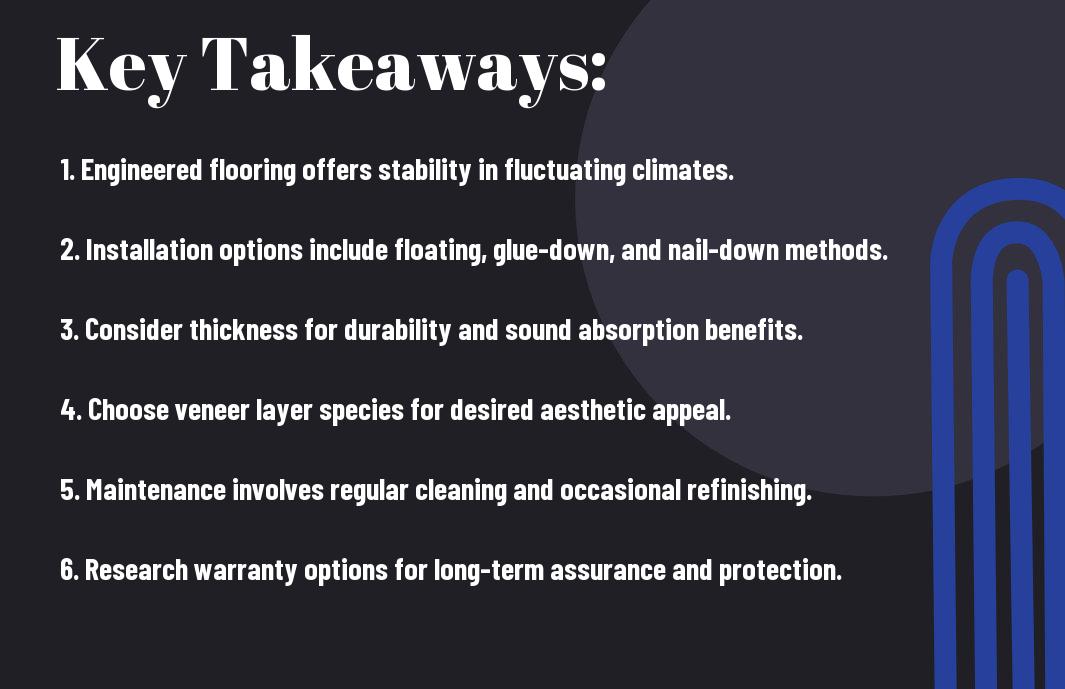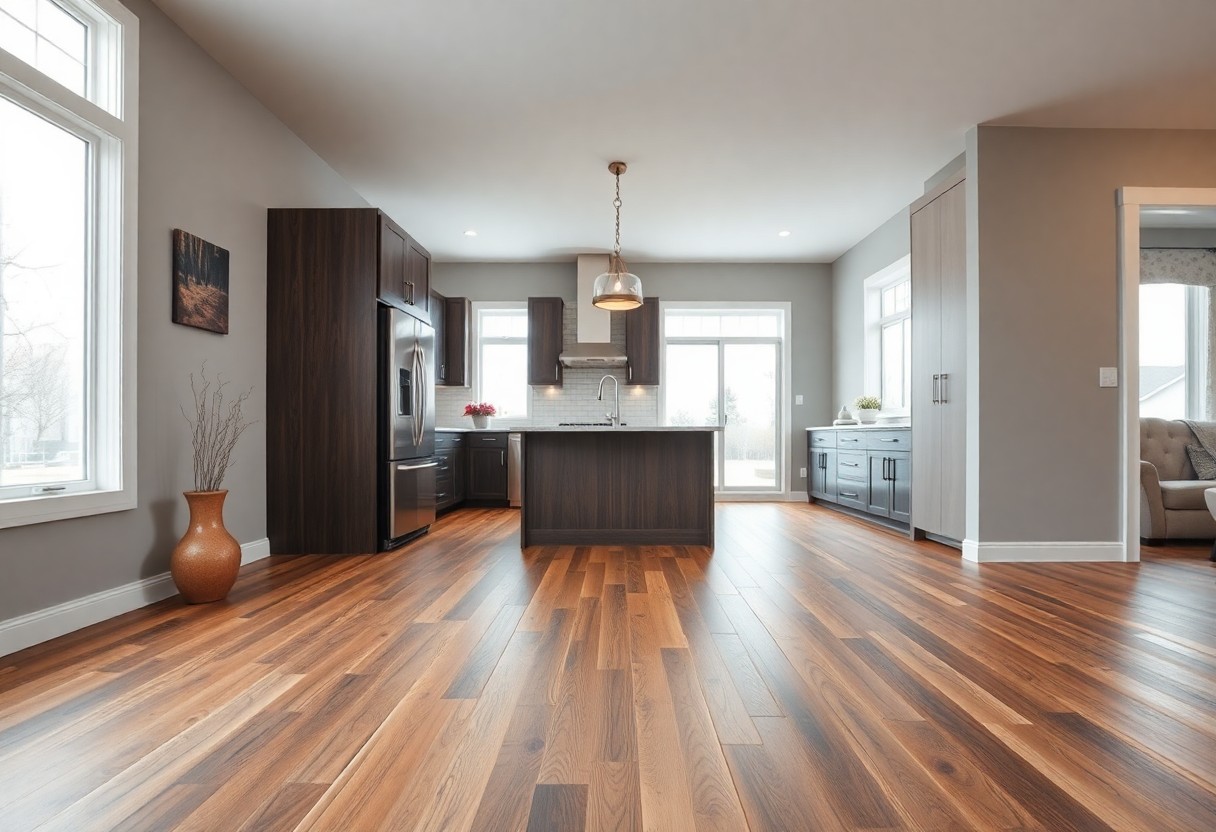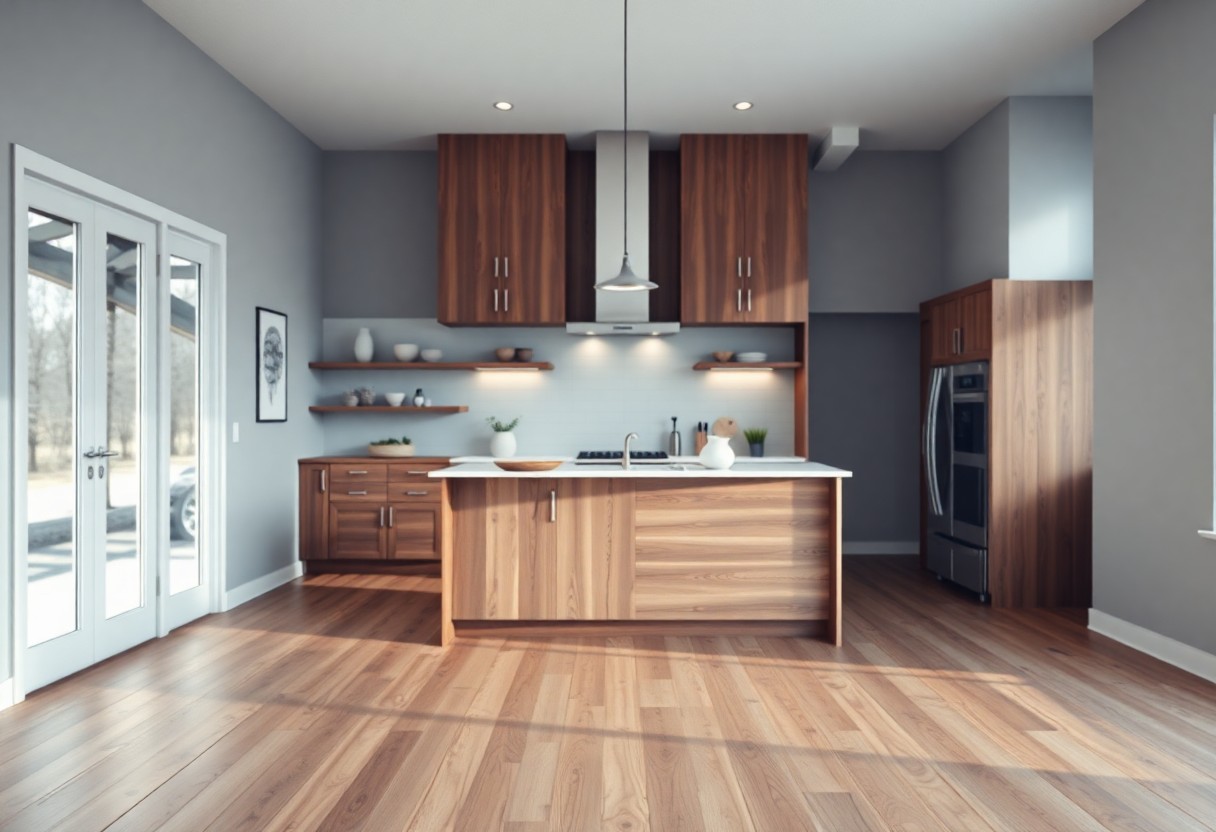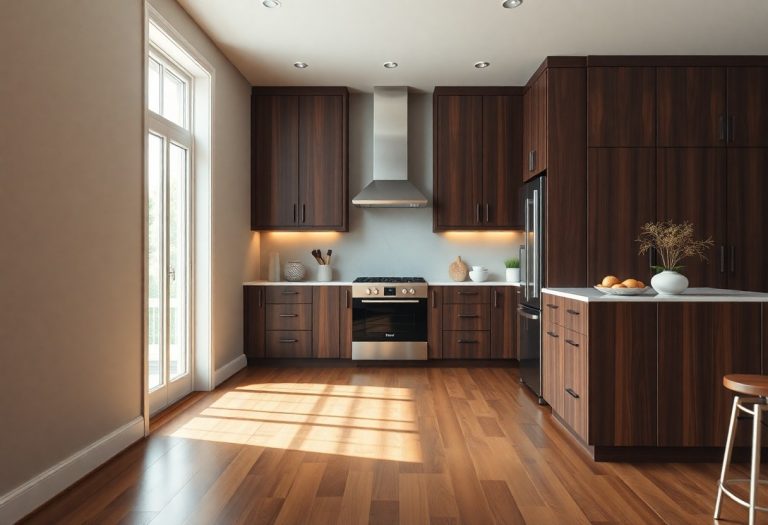It’s necessary for you to understand the benefits and considerations of engineered flooring to make informed decisions for your Kitchener home. This versatile option combines the beauty of hardwood with added durability, making it a popular choice among homeowners. In this guide, you will explore different types of engineered flooring, key installation techniques, and maintenance tips to ensure your investment stands the test of time. Armed with this knowledge, you can confidently choose the best flooring solution that complements your lifestyle and enhances your living spaces.

Understanding Engineered Flooring
Before you choose your flooring, it’s important to understand the fundamentals of engineered flooring. This innovative product combines the aesthetic appeal of hardwood with increased durability and stability, making it an excellent choice for homeowners in Kitchener. By learning about its construction, benefits, and potential applications, you can make an informed decision for your space.
Definition and Composition
Across the industry, engineered flooring is defined as a floorboard made of multiple layers of wood. The top layer consists of real hardwood, while the underlying layers are constructed from plywood or high-density fiberboard. This layered approach allows the flooring to maintain its appearance while offering better resistance to moisture and temperature fluctuations.
Advantages Over Traditional Hardwood
Above all, engineered flooring provides several advantages over traditional hardwood. Its robust construction enables it to handle various environmental conditions better, which means you can enjoy the beauty of wood without the drawbacks. Additionally, engineered flooring is often more affordable and can be installed over existing floors, saving you time and money.
Advantages of engineered flooring extend beyond durability and cost-effectiveness. Its multi-layer design allows for greater stability, reducing the likelihood of warping or cupping in humid areas. This means you can install it in high-moisture environments, such as kitchens or basements, where traditional hardwood would struggle. Furthermore, many engineered options come pre-finished, eliminating the need for extensive installation processes and allowing you to enjoy your new floors sooner.
Types of Engineered Flooring
Any Kitchener homeowner exploring engineered flooring options will be pleased to find various types that suit different aesthetics and functionality. Here are some common types:
| Classic Engineered Wood | Made with a hardwood veneer layer over plywood. |
| Luxury Vinyl Plank (LVP) | Designed to mimic hardwood but is more water-resistant. |
| Aquaguard Engineered Flooring | Water-resistant hybrid perfect for high-moisture areas. |
| Wide Plank Engineered Flooring | Offers a more rustic look with wider boards. |
| Herringbone Engineered Flooring | Stylish, unique patterns suitable for modern homes. |
The right choice depends on your personal style and where you plan to install it.
Styles and Finishes
To match your interior design preferences, engineered flooring comes in various styles and finishes. You can choose from traditional to contemporary looks, including smooth, brushed, or distressed surfaces. The diverse range of stains and colors available allows you to personalize your space. This ensures that you can find an option that complements your decor while providing the durability and stability engineered flooring offers.
Choosing the Right Thickness
Along with styles and finishes, the thickness of engineered flooring plays a significant role in performance and longevity. You typically find thickness ranging from 5mm to 20mm. You should consider where the flooring will be installed as thicker boards tend to provide better sound insulation and durability in high-traffic areas.
Due to the layered construction of engineered flooring, the thickness you choose can affect its stability and feel underfoot. If your home experiences high foot traffic or if you plan to install flooring over a concrete slab, opting for a thicker board is advisable. Additionally, thicker options often can be sanded and refinished, allowing for more extended use and versatility. Ultimately, considering your specific needs will guide you to the ideal thickness for your flooring project.

Installation Process
Not every engineered flooring installation is the same, but understanding the general process will help you make informed decisions. Whether you choose to tackle the job yourself or hire a professional, being aware of the steps involved can enhance your confidence and ensure a successful outcome for your Kitchener home.
DIY vs. Professional Installation
Professional installation is often recommended for engineered flooring because it ensures the job is done correctly and efficiently. However, if you’re handy and willing to invest time, a DIY approach can save you money. Weigh your skills and available time carefully before deciding which method suits you best.
Preparation and Tools Needed
Behind every successful installation is a solid plan and the right tools. Before you begin, make sure you have necessary equipment, such as a miter saw, tape measure, and spacers, along with the flooring boards themselves. Proper preparation of the subfloor is also necessary to avoid complications down the line.
Installation requires careful planning and control over your space. Start by removing any old flooring and ensuring the subfloor is clean, dry, and level. You will need tools such as a flooring nailer or glue, a utility knife, and a tapping block. Additionally, having a moisture barrier or underlayment may be necessary, depending on your specific flooring material. Organizing your workspace and gathering all your tools beforehand streamlines the process, so you can focus on achieving a stunning result in your home.
Maintenance Tips
Now that you have embraced engineered flooring, it is crucial to keep it in top shape. Regular maintenance will prolong its lifespan and enhance its appearance. Follow these tips:
- Use a soft-bristle broom or vacuum with a wooden floor attachment.
- Wipe up spills immediately to prevent water damage.
- Avoid harsh cleaners and opt for pH-balanced solutions.
- Place mats at entrances to reduce dirt and debris.
- Consider using furniture pads to prevent scratches.
This simple routine will help maintain your flooring’s beauty for years to come.
Cleaning and Care Guidelines
About ensuring that your engineered flooring looks its best, start by establishing a regular cleaning routine. Sweep or vacuum daily to remove dirt and debris, and damp mop weekly using a manufacturer-recommended cleaner. Avoid using steam cleaners, as excess moisture can harm your floors. By adopting these practices, you will keep your flooring attractive and hygienic.
Long-term Maintenance Strategies
Among the best practices for long-term maintenance is keeping your home’s humidity levels in check. Engineered wood can expand or contract with changes in moisture, leading to gaps or buckling over time.
A consistent humidity level between 30%-50% is ideal for maintaining your engineered flooring’s integrity. Consider investing in a dehumidifier or humidifier to regulate moisture during different seasons. Additionally, inspect your floors periodically for signs of wear, and reapply protective coatings as needed. This proactive approach will ensure your flooring stands the test of time and continues to look stunning.
Environmental Considerations
Keep in mind that the environmental impact of flooring choices is significant. As a Kitchener homeowner, you should prioritize materials that not only enhance your home’s aesthetic but also support sustainability. Engineered flooring often uses less hardwood than traditional solid wood floors, making it a more eco-friendly option. Additionally, it can contribute to responsible logging practices by utilizing fast-growing species. Understanding these aspects can help you make informed decisions that benefit both your home and the planet.
Sustainability of Engineered Flooring
Considerations around sustainability make engineered flooring a desirable option for eco-conscious homeowners. Engineered flooring is typically constructed using high-quality plywood or fiberboard, which means less waste from full-length lumber. Moreover, many manufacturers source their wood from responsibly managed forests, helping to minimize the negative effects on the environment. By opting for engineered flooring, you not only enhance your home’s beauty but also support sustainable practices that can lead to better environmental outcomes.
Impact on Indoor Air Quality
Engineered flooring can have a significant impact on your indoor air quality, an necessary aspect of your home’s health. Many lower-quality flooring options release volatile organic compounds (VOCs), which can lead to health issues over time. However, many engineered flooring products are designed to be low-VOC or even VOC-free, which helps maintain better air quality in your home. Choosing high-quality, certified brands can ensure that you’re protecting your family’s health while enjoying the benefits of beautiful flooring.
In fact, indoor air quality can be affected by the materials used in your engineered flooring. Many manufacturers now prioritize low-emission materials and adhesives, which means that when you install engineered flooring, you can minimize the presence of harmful chemicals in your home. Ensuring that your choice aligns with air quality standards will create a healthier living environment, particularly important for families with children or individuals with sensitivities. By selecting the right engineered flooring, you take an important step toward improving the comfort and safety of your home.
Cost Considerations
Despite the appeal of engineered flooring, understanding its cost implications is necessary for Kitchener homeowners. You’ll find that prices can vary significantly based on factors such as quality, brand, and style. It’s advisable to evaluate your budget carefully to ensure you’re making a sound investment in your home.
Average Prices in Kitchener
Behind the various options available, the average price of engineered flooring in Kitchener typically ranges from $3 to $12 per square foot. The cost largely depends on the thickness of the veneer, the type of wood used, and the manufacturer. By researching local suppliers, you can find the best options that align with your aesthetic and financial preferences.
Budgeting for Installation and Maintenance
Below the initial purchase price, you’ll need to account for installation and potential maintenance costs. Hiring a professional installer can add another $2 to $5 per square foot, while routine care may require additional investment over the years.
Cost-effective maintenance is key to ensuring that your engineered flooring lasts. Regular cleaning using suitable products, preventive measures like area rugs, and timely repairs can help you avoid unexpected expenses. If you opt for professional installation, always factor in the warranty that comes with it, as this can save you money in the long run by covering certain damages or issues that might arise.
Summing up
With these considerations in mind, you can confidently navigate the world of engineered flooring to make the best choice for your Kitchener home. Understanding the benefits, installation options, and maintenance requirements will empower you to select flooring that enhances your living space while fitting your lifestyle and budget. Explore different styles and consult with local experts to ensure that your flooring decision aligns with your vision for your home.





